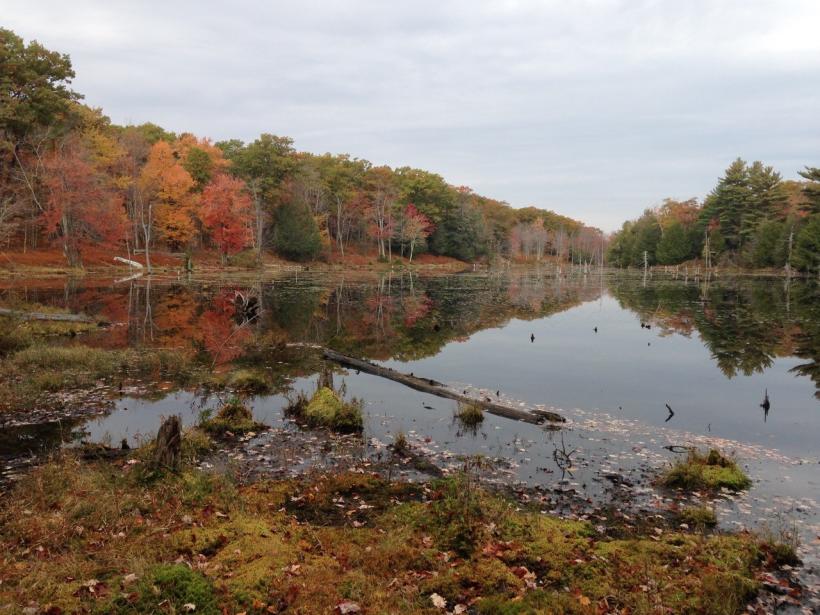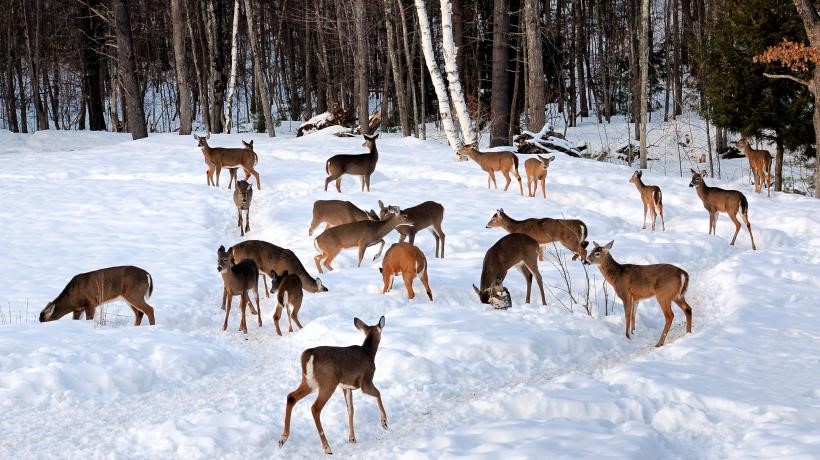MassWildlife reported that the spring turkey harvest was 3,310 (including 73 on youth day) and that was the highest spring season ever recorded. They believe this record harvest can most likely be attributed to the increase in hunter effort that resulted from COVID-19 closures. The fall turkey harvest was 256, the highest fall season total in over 20 years. MassWildlife feels that an expanded fall archery season and an increased annual limit likely contributed to the high fall harvest. In total, some 3,566 birds were harvested last year.
Intimidating gobblers
Now that the black bears are all snuggled up in their dens, or should be, we shouldn’t have to worry too much about other wild critters, right? Well, not necessarily so says the Massachusetts Division of Fish and Wildlife (DFW). There are some mean-spirited, aggressive gobblers out there and their numbers are growing (about 35,000 of them) and they may attack people that they view as subordinates. They are boldly strutting around downtown streets in the eastern part of our state. Local police departments want residents to know that although dangerous, they should not be intimated by aggressive turkeys.
Does that mean that we should strap a holstered pistol or enroll in a self-defense course? Heck no! Residents should just avoid close encounters with them and don’t ruffle their feathers. Do not feed them or they could become tame and possibly have angry or wild outbursts.
Here are some recommendations from MassWildlife:
- Keep all bird feeder areas clean — bird seed attracts turkeys and they will flock to the feeder if there is seed on the ground. Remove feeders in the spring as well, as birds will be able to find plenty of natural food.
- Protect your garden and crops — If you use a hose or make loud noises, turkeys that are stealing food will be intimidated and likely leave the crops alone.
- For aggressive turkeys, don’t let them intimidate you —You should threaten or scare bold turkeys using a hose, a leashed dog or loud noises.
- Cover windows and shiny objects — Turkeys will focus on their own reflection or shiny objects. In order to prevent that, be sure to remove shiny objects or cover windows.
Young lady hoists nice pickerel out of hole while ice fishing
On Saturday, January 23, the weather was brutal with wind chill temperatures hovering around 10 below zero. Young Allison (last name requested not to be disclosed) was fishing with her father and mother when she caught a 25 ½ inch, 4 lbs 2 oz chain pickerel out of Laurel Lake in Lee. As of this writing (February 3) she is still the current leader in the MA Youth Sportfishing Award Category. She will definitely receive a bronze pin and if it holds up for the entire year, she will receive a gold pin and nice trophy. Way to go Allison! Whether or not your large fish holds up for the remainder of the year, it is still a great accomplishment.
Her mom, Jeremia, said that she made Cajun style fish cakes with the pickerel. Yum, yum.
She said that Allison is now “hooked” on ice fishing.
(Incidentally, pickerel is a very tasty freshwater fish. The key is getting past the bones, and grinding them up and making fish cakes is one way to do that.)
Basic ice fishing clinic
If you are curious about this family fun wintertime activity now is your chance to learn. MassWildlife invites you to join them for a 1-hour online ice fishing clinic to learn all the basics of fishing on ice. Its Angler Education Program will host this online one hour ice fishing clinic on Zoom to give you the confidence to give hard water fishing a try. You will learn what safe ice is, and how to test for it, how to properly dress for the experience, as well as all the necessary gear and tips to get you started. There is such a clinic on Monday evening, February 22, from 5:00 to 6:00 pm. Registration is required at http://www.Mass.gov/service-details/angler-education-calendar.
Rescheduled ice fishing derby
Staying on the subject of ice fishing, the Berkshire County Whitetails Ice Fishing Derby that was scheduled for last Saturday (January 30) but was postponed due to the brutal weather. It has been rescheduled for today. It runs from 7:00 am to 2:00 pm and weigh-in for the heaviest fish is at the boat ramp at 2:30 pm sharp. First Place winner gets $750, Second Place gets $500 and Third Place gets $250. The entrance fee is $25 single and $15 for children aged 15 and under. For more info, call Bill Bailey at 413-244-2304.
Respect the wilderness
Here are a few simple steps from MassWildlife that you can take to respectfully enjoy the outdoors:
- Plan ahead – Beaches, state parks, and conservation lands might have different regulations you should be aware of like what activities are permitted on the property. Research the rules for the area you plan to visit beforehand. Respect private property and do not trespass on private land. MassWildlife owns and manages over 220,000 acres of Wildlife Management Areas and Conservation Easements that are open to hunting, fishing, trapping, and other outdoor recreation. Prepare for your adventure by visiting the MassWildlife Lands Viewer to customize and print maps of MassWildlife properties.
- Pack out what you pack in – This includes food wrappers and remains, drink containers, and dog waste bags. If you’re hunting or fishing, be sure to take all equipment out with you like discarded fishing line or shotgun shells.
- Give wildlife space – Keep a reasonable distance from wildlife. Use your binoculars and spotting scope rather than your feet, to get “closer” to your subject. If you get too close to an animal, its behavior will change. It may stop feeding, look at you, vocalize, appear nervous or flee. If you note a change in behavior, back off slowly until you’re out of the animal’s “space”. Do not feed wildlife.
- Respect the land – Avoid damaging plants and trees, do not carve into tree bark and be aware of where you are stepping. Follow posted signage to avoid nesting areas and vernal pools. Please stay on trails if they are available.
- Be considerate of other visitors – Many people visit the wilderness to enjoy the quiet and tranquility. Remain a respectful distance away from other visitors, avoid loud noises, and follow regulations for pets.
Wild & Scenic Westfield River Community Grants Announced
The Wild & Scenic Westfield River Advisory Committee announces the availability of community grants ranging from $500 to $20,000 for work conducted through October 2021. Recognizing the important role towns and local groups play in the protection of river resources, the funding supports activities that directly and measurably enhance and protect river resources or build strong local stewardship of the river and its tributaries. Eligible entities include conservation commissions, planning boards, select boards, libraries, historical commissions, recreation departments, schools (including environmental clubs, art programs, science classes, etc.) and other town-sanctioned committees and boards. Community-based nonprofit 501(c)(3) organizations, such as historical societies, garden clubs, art associations, churches, local land trusts and neighborhood groups, are eligible. Partnerships, between towns, boards, organizations, etc., are encouraged. Individuals interested in applying should partner with either a town or nonprofit organization(s). Eligible towns are Becket, Chester, Chesterfield, Cummington, Huntington, Middlefield, Savoy, Washington, Windsor, and Worthington. Interested parties are strongly encouraged to contact the W&SWR Committee prior to starting the application process to confirm their eligibility. Contact Andrew Petitdemange: Andrew_Petit_de_Mange@nps.gov.
Firearms/ License-to-Carry Course
Avid Sports will be holding its next Firearms Safety Course on Tuesday February 9 at 5:00 pm at its place at 1201 West Housatonic Street, Pittsfield. The course allows one to apply for a Pistol permit or F.I.D. card. You can either Call 413-997-3600 or stop by Avid Sports for more details or to sign up for the course.
The Lenox Sportsmen’s Club will be hosting a LTC and UTAH Firearm Certificate Course on February 13 from 9:00am to 1:30 pm at its clubhouse. This course is Mass State Police Compliant. The cost for MA certification is $80, other states cost $125 and a combination of any two states cost $150. Remember, space is limited due to Covid-19 guidelines so you must pre-register. Contact Tom Nadolny at 413-822-6451 or tnadolny1@gmail.com for more information or to pre-register.











